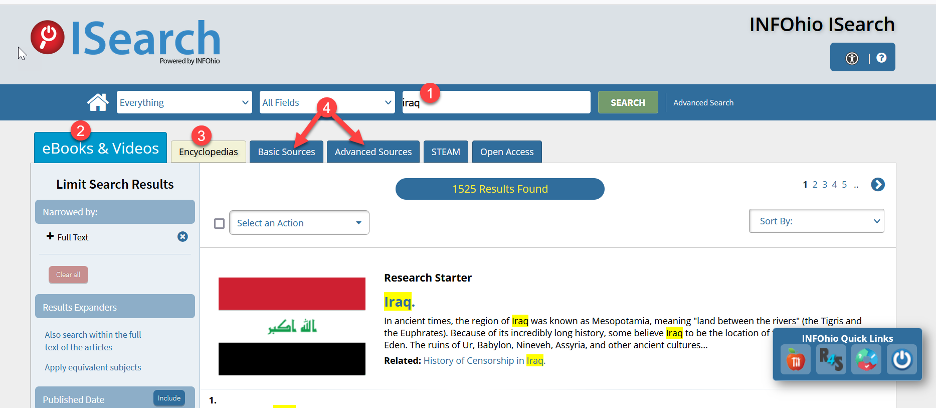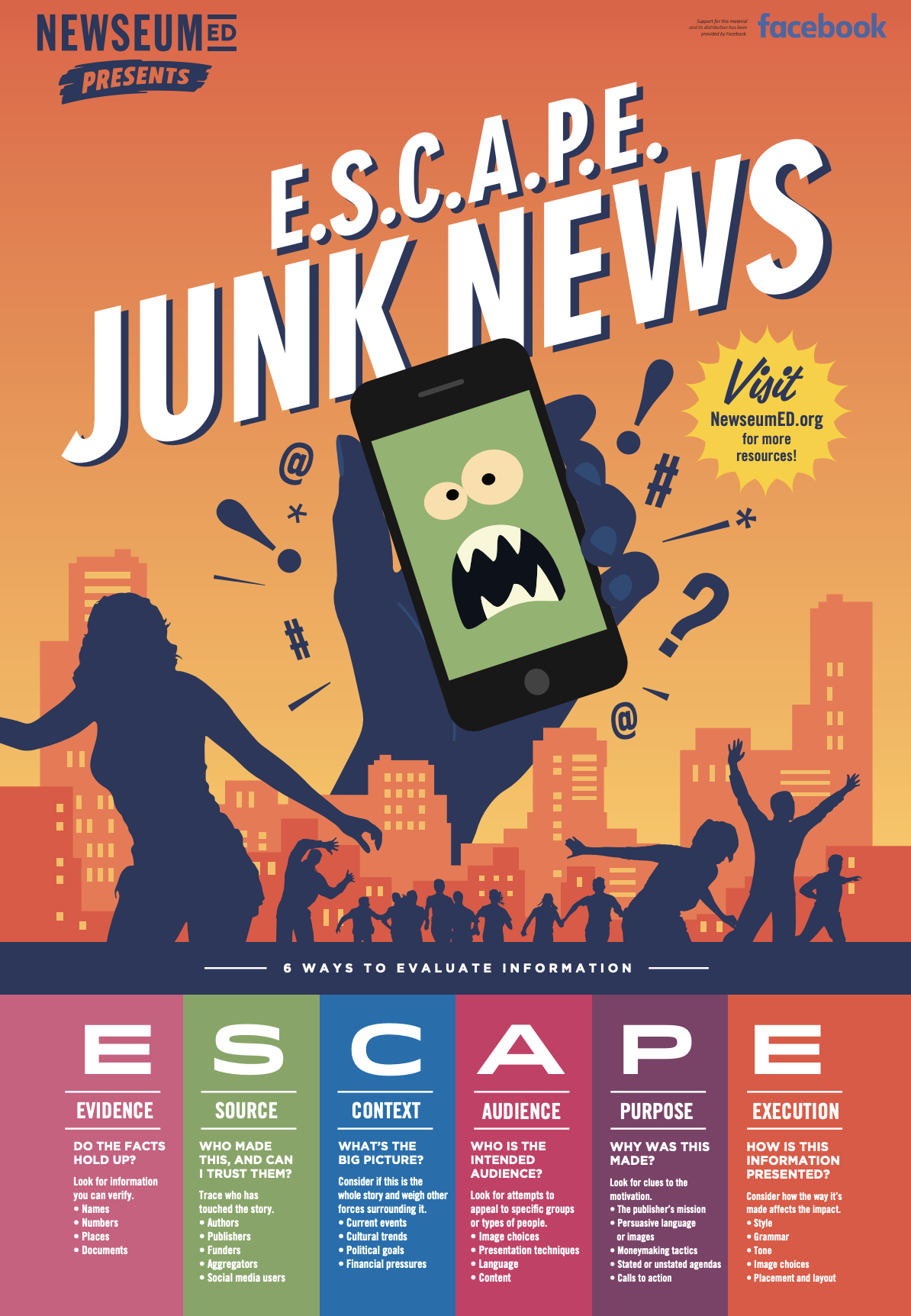According to Common Sense Education, information literacy "includes the ability to identify, find, evaluate, and use information effectively. From effective search strategies to evaluation techniques, students learn how to evaluate the quality, credibility, and validity of websites [and other resources], and give proper credit."
Librarians guide students through the following information literacy skills:
Identifying Types of Information
We live in an information-rich world and information can be found everywhere and in many different formats and genres. Books, encyclopedias, magazines, newspapers, primary sources, websites, databases, and social media are just some of the places where information is found. Students need to understand what type of information comes from these different sources and how to accurately pick the right source for the information they need.
Finding Information
Once information sources are identified and understood, the correct source must be used to find the information needed.
For example, a teacher may have assigned students to research a country. Where would the best place be for students to find information on their assigned country? Students could search the online catalog to find what books are in the library. They could also use online databases to see what magazine, newspaper, and encyclopedia articles can be found on their country. Using INFOhio's ISearch database is a great place to start.
ISearch lets you search nearly all INFOhio resources from a single search box to find needed information.
ISearch can be integrated into classroom instruction and used in many ways for your curriculum needs. Use ISearch for:
Parts of ISearch

To learn more about ISearch and how to use it with your students, check out the ISearch for Librarians class.
Evaluating Information
In addition to understanding sources and where to find information, students need to decide if the information is accurate and valid. One popular acronym that can be used to check for accuracy and validity is E.S.C.A.P.E. Sign up on the E.S.C.A.P.E. site and download posters and bookmarks to share this evaluation process.

E - Evidence: Do the facts hold up?
S - Source: Who is the author? And can I trust them?
C - Context: What's the big picture? Does it make sense with other information?
A - Audience: Who is the intended audience?
P - Purpose: Why was this made? Is it factual? Or persuasive?
E - Execution: How is the information presented? Does it look professional?
Another option to evaluate information is to use Kathy Schrock's 5 W's of Website Evaluation. Schrock's website has additional information about critically evaluating information and also has bookmarks that can be downloaded and shared with students.
Giving Credit
When information is used, credit must be given to the author or creator of the information. It is important to give credit because it is not only a sign of respect to the original creator, but it also provides readers access to the information if they want to learn more about the topic. To learn more about citations, Citation Facts for Kids on Kiddle.com provides a good overview and explanation on why giving credit is important.
Fetch is avaiable to INFOhio automated schools. If you are an INFOhio school, please log in with your school username/password using the button at the top-left corner of this page.
For more information about Fetch, please visit the Fetch information page or contact INFOhio support at https://support.infohio.org.